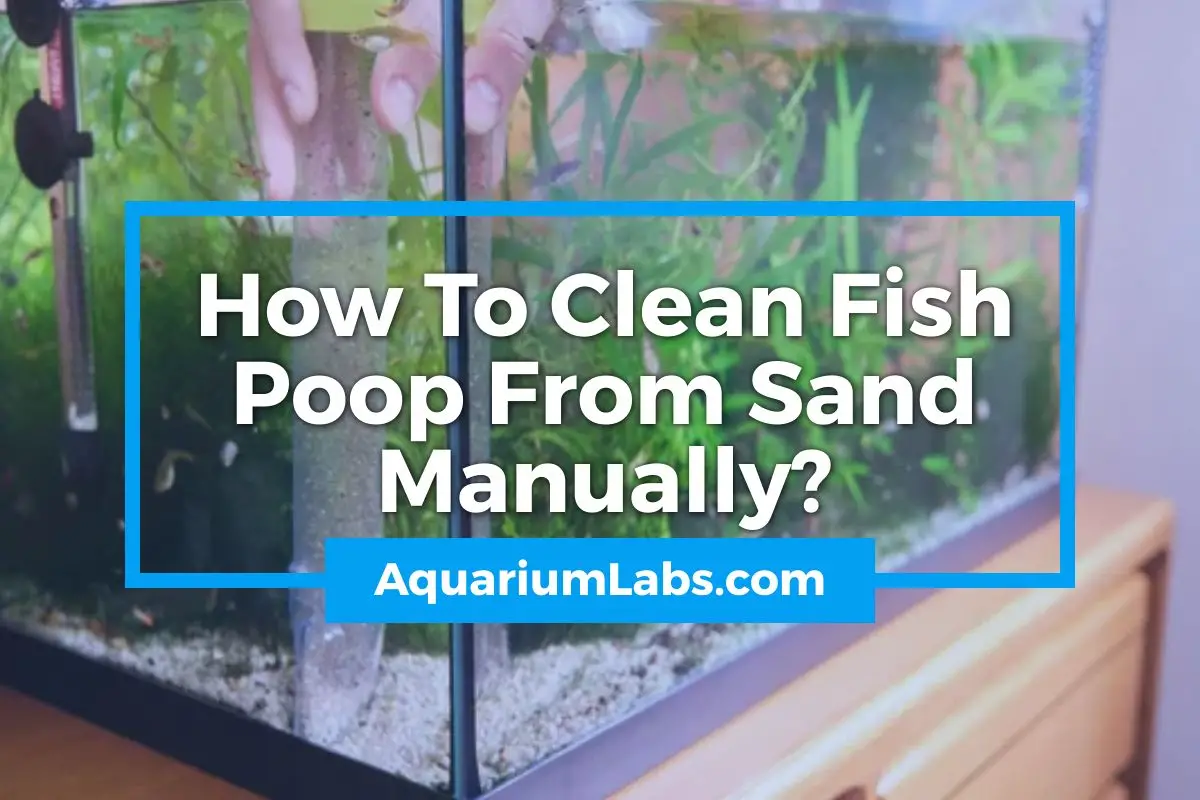Poop is something we don’t really like to talk about, but it’s a major part of any aquarium experience. Getting rid of it is part of our weekly and monthly maintenance schedule. Not only because our fish are healthier, but it keeps our tanks looking pristine.
So how to clean fish poop from sand manually? How do we remove waste from sand and gravel at the bottom of a tank?
Does Fish Poop Dissolve?
Fish poop does dissolve over time, but that’s not something we necessarily want to happen. For one, it takes days to weeks for bits of fish poop to dissolve. Bacteria are involved in decaying fish waste into other debris forms. But one of the chemicals released in this process is ammonia.
Ammonia is very toxic to all forms of aquatic life. Fortunately, in a well-established aquarium, there is also a secondary set of beneficial bacteria that eats ammonia, converting it into nitrite and then nitrate. This is known as the nitrogen cycle, and it’s part of any healthy aquarium ecosystem.
But you can’t rely on them to do all of your tank cleanings because fish poop accumulates much faster than your bacteria will be able to process. In nature, bacteria and plants do all of the work. But only because there are so many – and there is so much water volume – compared to how few fish there are in a body of water.
Taking a Closer Look
Before you give your sand a deep cleaning, take a moment to study fish poop now and then. It sounds like a waste of time studying fish waste. But you can actually learn a lot about the health of your fish by looking at fish waste left behind.
A healthy bit of fish poop will likely be similar in color to their main food source. If the flakes you feed are enriched with spirulina algae, then any poop will likely be a faint green color. If you fed your fish bloodworms as a treat, expect to see more red. But if you are feeding a standard prepared blend and you start seeing unusual colors from your fish, then I would be a little concerned.
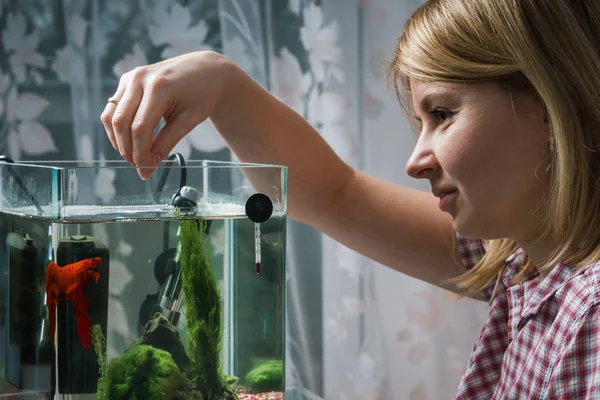
Pale yellow, pale green, clear, or slimy/liquid fish poop are all things to worried about if the food you are feeding does not contain the pigments required. It can be a sign of simple digestive problems or something as serious as a parasitic infection.
Different fish poop in different ways as well. If a fish that normally drops little pellets starts leaving long strings, it might be nothing. But it is also a sign that you should pay attention to, just in case.
So do remove fish poop from your tanks. Just remember to also take time to study it now and again to ensure your fish are doing well!
Is Fish Poop Good for Aquarium Plants?
Fish poop can be considered organic waste and something to be removed with dirty water during a water change. But it is also a source of organic and inorganic nutrients that plants can make use of.
Most freshwater plant species grow well in aquarium sand or gravel. Except for the fact that these substrates are inert, meaning they contain no nutrients of their own. Fish waste that decays becomes a sort of organic medium that slowly releases ammonia, phosphates, and other goodies directly into the roots of growing plants.
You don’t need to do anything to make this process happen. Some fish poop will always be left behind after each water change. And live plants will naturally make use of it as the tiny decaying bits get trapped among sand and gravel grains.
So if you do have a gravel cleaner, you may want to stick to surface-level cleanings in a heavily planted tank. That is assuming you keep a close eye on your water quality. If your ammonia levels are constantly rising and your aquarium plants aren’t keeping up, then it’s time to do a deep cleaning of your substrate.
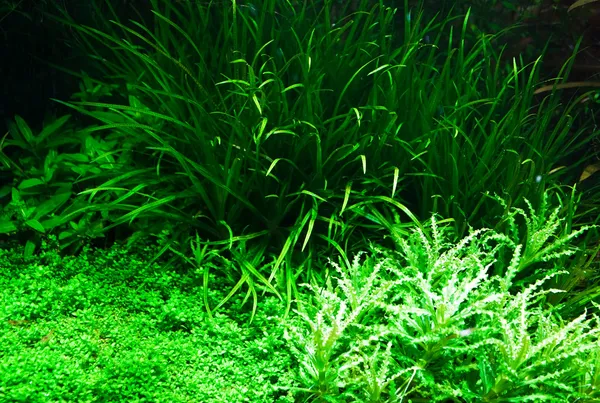
What Will Clean Up Fish Poop?
Aquarium plants for our tanks can only do so much. We also need to clean fish poop ourselves using some of the most well-tested equipment in the fish tank hobby!
Aquarium Filters And Other Equipment
A filter with a powerful enough water flow is a great way to keep debris from accumulating between each cleaning. Filters typically purify incoming water and send it back out of the unit free of ammonia and nitrite. However, any poop that flows into it will also be screened out mechanically thanks to the cotton floss and other filter media.
Fish waste will tend to collect along the bottom of a tank and need to be vacuumed out. But if your filter has a strong enough current, it can create constant circulation that gently pulls debris towards it.
This way, poop has less of a chance to get hidden in crevices where it will rot. A sand or bare bottom substrate makes this even easier since poop tends to get caught on large gravel grains and won’t get moved towards the filter.
How Do I Use An Aquarium Gravel Vacuum?
One piece of aquarium equipment that every fish tank keeper will need is a gravel vacuum to reach and clean fish poop from within the substrate. Freshwater or saltwater, planted or coral reef, every fish tank needs a siphon hose.
So how do we use a vacuum to remove fish poop and perform a water change?
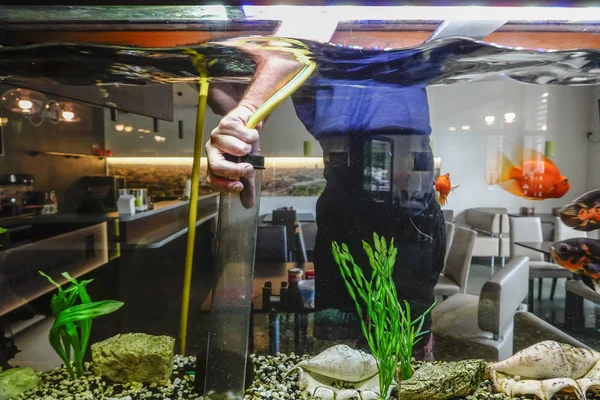
Vacuuming Gravel Vs Sand Substrate
When using a vacuum on aquarium sand, you need to take different steps versus a gravel substrate. The problem with a gravel cleaner is that it is probably powerful enough to suck up the sand from the bottom of your fish tank. So how can we clean fish poop without disturbing all of our aquarium sand?
Fortunately, you don’t really need to go all out in order to clean fish poop from the sand. Poop and other debris will sit right on top of the sand. The individual grains are so tightly compacted that the larger chunks of waste won’t fall in between.
That’s why a fish tank with white sand often looks like it has so much poop after just a few days when it really only has an average load! The cleaning process for sand substrates is to run your siphon hose gently along the surface without disturbing the lower layers too much.

Since the fish poop is sitting right on top of your sand, it takes next to no time at all! The only downside is that poop isn’t easily hidden. If you don’t suck it out, it’s there to be seen at any time.
If you have a gravel-based aquarium, you will need to vacuum much deeper to get rid of all the dirt when cleaning. Unlike sand, gravel pieces can trap larger bits of debris. So getting the aquarium clean and getting rid of poop when cleaning will take more work.
Really work the gravel substrate when vacuuming to get at it all. You can even stir the gravel around some, though I would not do so if you have live plants since this action will break up their delicate roots. This can cause stress and even kill plants if done too often in a gravel tank.
Gravel Cleaning Solutions
Now that you better understand how to remove dirty water and poop from a tank consider one of the following siphon options for cleaning aquariums! By the way, each siphon is designed for a specific water volume, but most brands also make models for larger or smaller tanks.
- Python No-Spill Clean & Fill
- Enomol Gravel Vacuum for Aquariums
- Boxtech Fish Tank Water Changer
- Tetra Water Maintenance Items
- AREPK Small Fish Tank Cleaner
- Aqueon Aquarium Siphon Vacuum Gravel Cleaner
Keeping My Fish Tank Clean
Once your fish tank is free of poop, is there any way to keep our sand looking pristine? Can we get algae eaters to purify our sand by eating some of the poop that normally collects?
What Will Eat Fish Waste in a Fish Tank?
When looking for ways to remove fish poop easily and quickly, new aquarists sometimes ask pet store employees for animals that will eat it! After all, what could be easier than having an animal do all of the work for you?
So people end up being sold snails, shrimp, and even fish like plecostomus, thinking they will be cleaning fish poop in the process of eating. But unfortunately, that’s not at all the case.
Do Algae Eaters Eat Fish Poop?

Plecostomus, otocinclus, corydoras, goldfish, and other bottom feeders in a fish tank do not clean fish poop. They are vegetarians that feed mostly on green hair and spot algae growth. They will also eat any leftover food that your fish miss.
So in that way, they do help keep the tank clean by eating food that would rot. Rotten food is turned into ammonia quickly, yet if algae eating fish eat it, their poop is less detrimental to your water parameters.
Snails and shrimp species are also scavengers, specifically detritivores. As detritivores, they feed mostly on detritus, which includes leftover food, algae, dead plant matter, and so on. Occasionally a snail or shrimp may nibble on fish poop, especially the nutrient-rich waste of carnivorous fish. But they don’t eat poop as a major part of their diet. Snails and shrimp will ignore most fish poop in favor of algae and any uneaten food they can find.
And if they can’t find any leftovers or algae, then they are likely to starve. So don’t expect other species of living things to act as a fish tank poop cleaner. Unfortunately, that’s mostly your job to do!
Wrapping Things Up
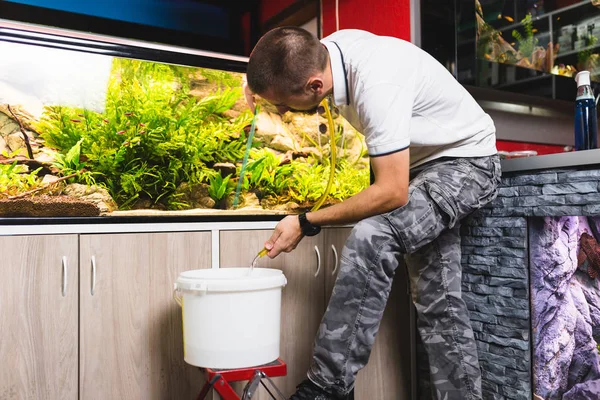
Anyone keeping an aquarium needs to deal with cleaning fish poop from sand now and again. Unfortunately, there aren’t any animals that will eat it all, so it is up to us to do the work.
Fortunately, there are many ways to give your substrate a good cleaning. From using a turkey baster for a light clean to a siphon hose for larger water changes…Removing poop is always a good idea unless your plants can make good use of it (and you have a substrate for it to break down into).
And remember: keeping sand clean is a little different from gravel because poop sits right on top of it. Sand needs cleaning more often – but it’s also faster to vacuum compared to gravel. Which tradeoff is best is really up to you!
Related Reading:
- Why Some Aquariums Get Dirty So Fast
- Why Filters Get Dirty Fast
- A Guide On Cleaning Fish Tanks
- Poop Eater Fish 101
- Cleaning Gravel Without a Vacuum

